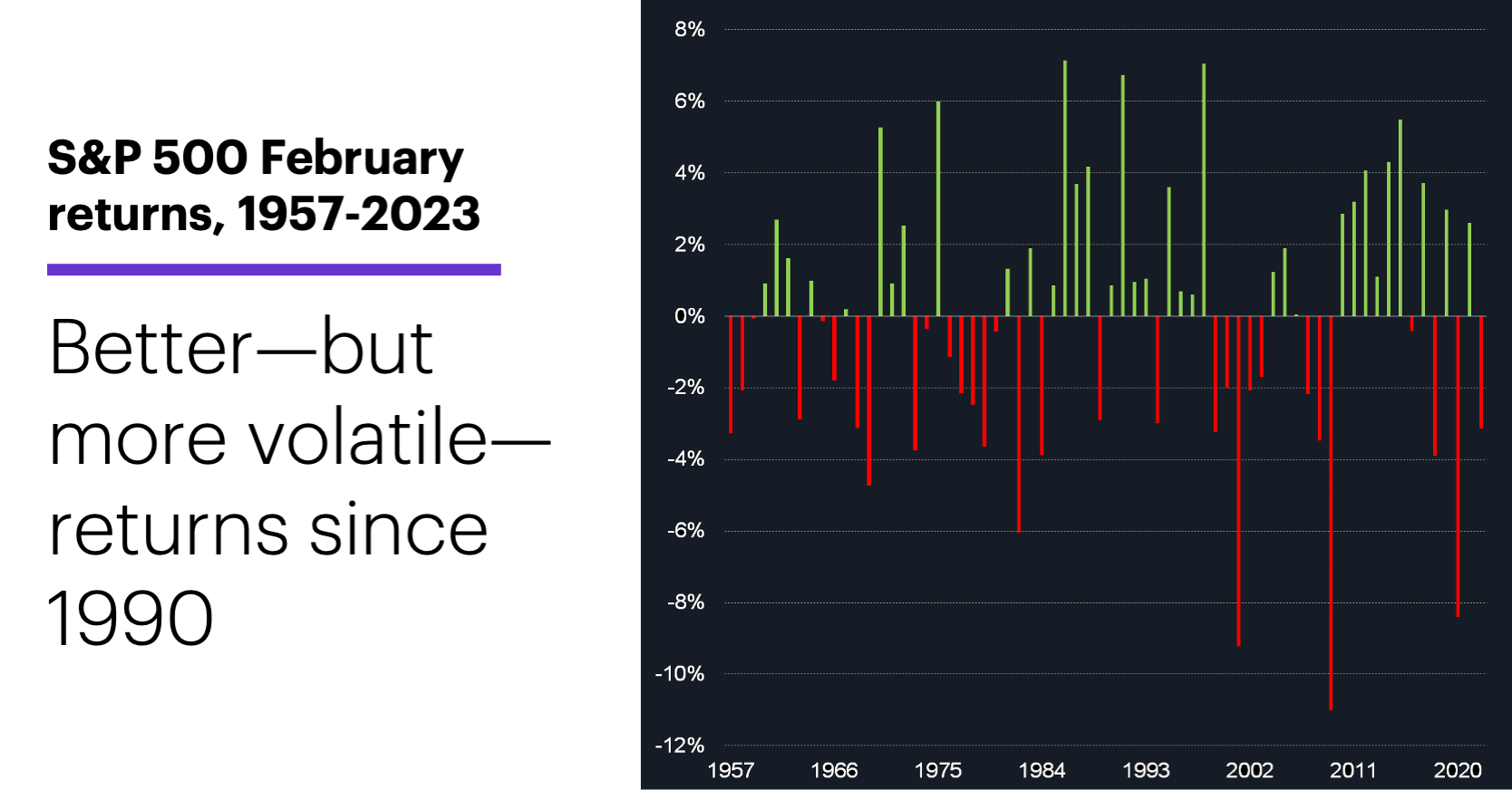February market patterns
- Feb. historically weaker-than-average month for stocks
- Less bearish in recent decades, but still volatile
- Three of the biggest Feb. sell-offs occurred since 2001
With the stock market closing out January at or near record highs, traders with a historical bent may be wondering if the current rally will bump up against February’s tendency to be a less-than-bullish month.
Then again, the market didn’t pay much attention to one of January’s more reliable short-term seasonal patterns. Before this year, 16 of the previous 23 times the S&P 500 (SPX) posted a net loss in the first five trading days of the year, January turned out to be a down month (70% of the time).
Like most months of the year, February’s return pattern has evolved over time. Before 1990, February was a down month for the S&P 500 (SPX) more often than not—18 of the 33 years between 1957-1989. Since then, it’s been positive more frequently (20 of the past 34 years):1

Source: Power E*TRADE (For illustration purposes. Not a recommendation. Note: It is not possible to invest directly in an index)
The Achilles' heel, so to speak, of February’s average historical performance—especially since 1990—has been the occasional sharp sell-off. When the market has fallen in February, those downturns have sometimes been much deeper than the typical sell-off in other months.
For example, from 1957-1989, even though February had a negative average return, the average positive February (+2.7%) was “bigger” than the average negative one (-2.5%). Since 1990, the average negative February (-4%) was the third-biggest of all months of the year (trailing only August and September), while the average positive February (+2.7%) was just the eighth-largest. The chart shows three of the deepest February declines have occurred since 2001.
Finally, positive Januaries have more often than not been followed by positive Februaries. After the 39 times since 1957 that the SPX had a positive January return, February was also an up month 24 times (61.5%).
Market Mover Update: Kura Oncology (KURA) rallied 23% intraday on Tuesday after releasing preliminary clinical test results on one of its cancer treatments (see “The news before the news”).
B. Riley Financial’s (RILY) roughly 27% Monday-Tuesday rally pushed the stock toward the top of its two-and-a-half-month trading range (see “Eyeing the breakout”).
Today’s numbers include (all times ET): Mortgage Applications (7 a.m.), ADP Employment Report (8:15 a.m.), Employment Cost Index (8:30 a.m.), Chicago PMI (9:45 a.m.), EIA Petroleum Status Report (10:30 a.m.), Fed interest rate announcement (2 p.m.).
Today’s earnings include: Boeing (BA), Lennox (LII), Mastercard (MA), Phillips 66 (PSX), Rockwell Automation (ROK), Silicon Laboratories (SLAB), Qualcomm (QCOM), Qorvo (QRVO)
Click here to log on to your account or learn more about E*TRADE's trading platforms, or follow the Company on Twitter, @ETRADE, for useful trading and investing insights.
1 Figures reflect S&P 500 (SPX) monthly closing prices, January 1957–December 2023. Supporting document available upon request.